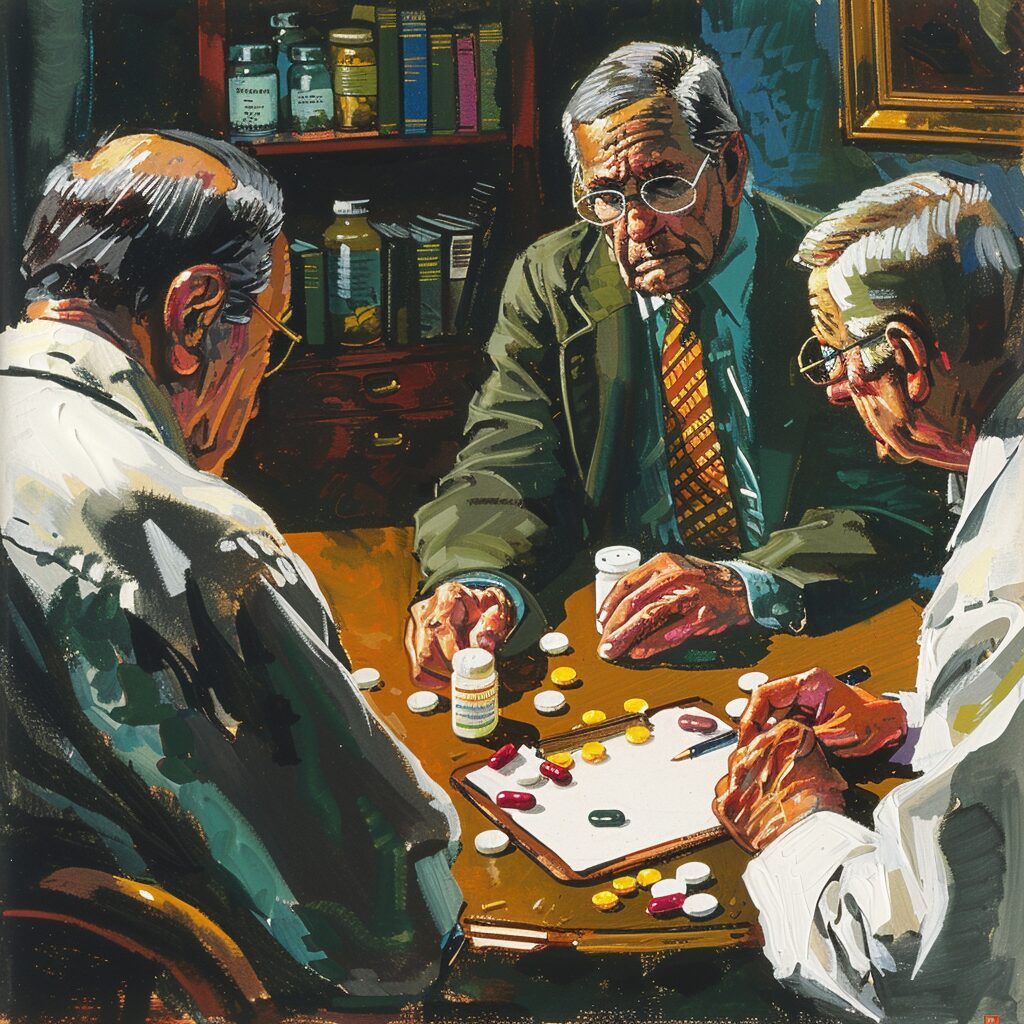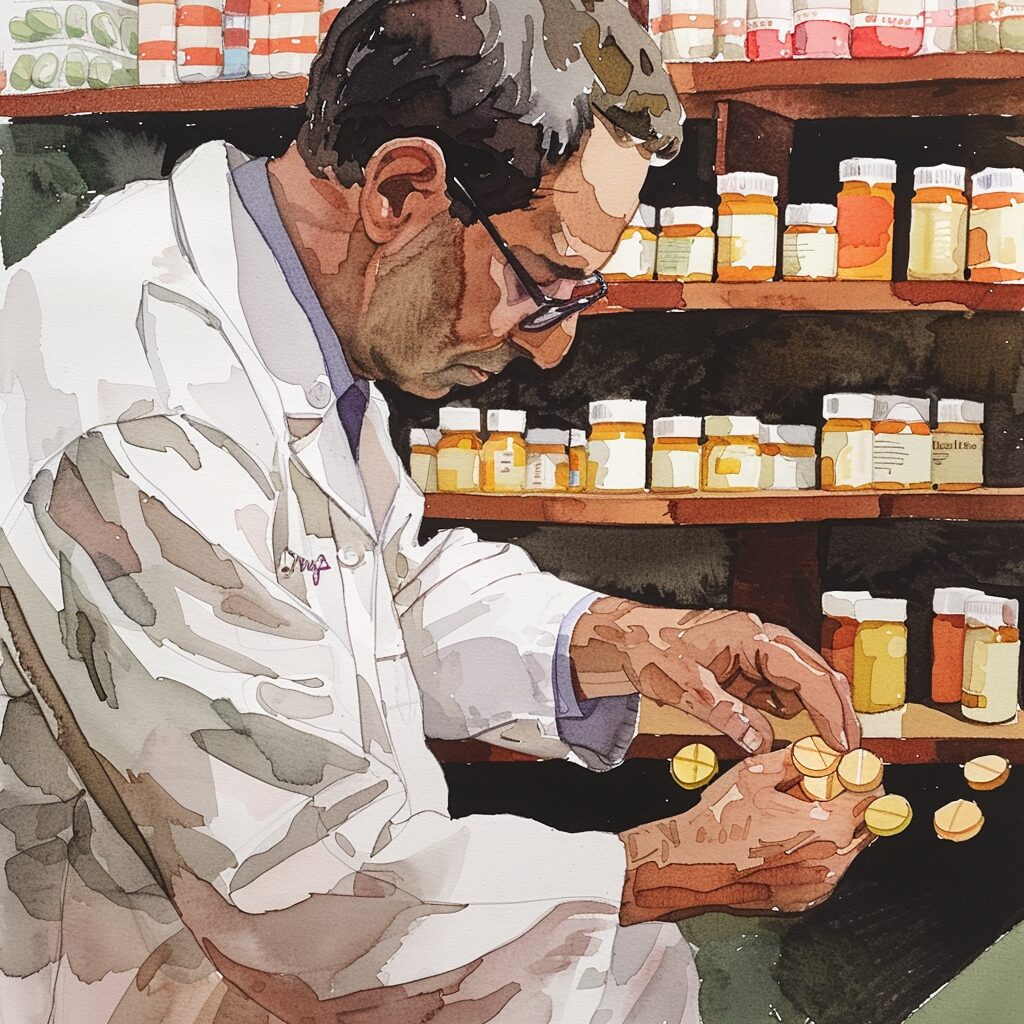Key Takeaway:
- Art therapy is an effective tool for addiction recovery: It allows individuals to express themselves in a non-judgmental environment and offers a safe space to explore and process complex emotions.
- Art therapy boosts self-awareness and self-esteem: By working on art projects, individuals gain a deeper understanding of themselves, their triggers, and their strengths, leading to improved self-esteem and confidence.
- Art therapy enhances coping mechanisms and problem-solving skills: Individuals learn how to regulate their emotions and develop effective ways to manage stress and other challenges in their lives, equipping them with essential skills for their recovery journey.
Struggling with addiction? You don’t have to go it alone. Art therapy can help you understand yourself and heal from addiction by exploring your thoughts and feelings in a creative way. Learn how art therapy can benefit your recovery and give you the tools to start a healthier lifestyle.
Art Therapy for Addiction Recovery: Definition and Types
Art therapy has been emerging as a proactive and effective way of aiding addiction recovery. Curious to learn more about what it is and how it works?
In this section, we will explore the concept of art therapy and different types that have been successfully used in addiction recovery programs. We will take a closer look at its role in helping individuals in recovery to become more self-aware and motivated, while also exploring different forms of art therapy that have proven beneficial.
So, join me on this exploratory journey to discover the power of art therapy in addiction recovery.
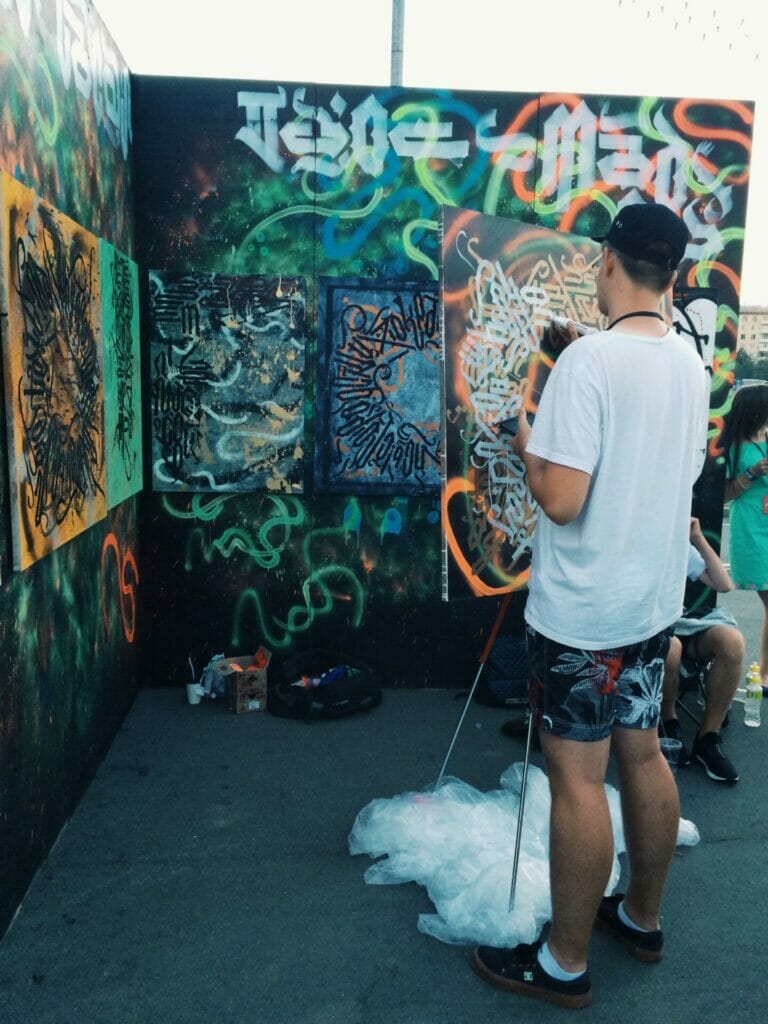
Understanding the Concept of Art Therapy
Understanding the concept of art therapy is essential to unlock its potential in various fields, including addiction recovery. Art therapy uses creative processes and artistic expressions to promote healing and growth in individuals who are struggling with emotional struggles, mental health issues, disability, or addiction. Instead of verbal communication, art becomes a medium for understanding emotions and feelings. It helps those who struggle to express themselves verbally.
Art therapy works by stimulating different parts of the brain through visual, auditory, and kinesthetic stimulation. This non-invasive approach creates a bridge between the conscious and unconscious thoughts and allows the patients to explore their inner landscape. The therapist leads the patient through art-making techniques that can trigger sensory processing areas of the brain, promoting relaxation, creativity expression, empowering self-awareness and confidence.
Different therapeutic modalities catered around different forms of art have been developed over time. Art therapy can be done using different types of mediums such as painting, drawing, sculpture or pottery to name a few. Many people who have experienced art therapy results report decreased stress levels in addition to increased quality of life counterparts who haven’t had this therapy.
Art therapy is seen as a way for individuals struggling with substance abuse issues to develop new relationships in recovery while exploring creative ways to use creative means towards healing their minds from addiction that can connect them back with life again; it’s an alternative approach that doesn’t rely on medical therapies alone.
“Everyone deserves access to care that connects them back with life.” Missing out on something as powerful as art therapy should not enter your mind because looking back someday you’ll realize how much potential was there at your disposition when you were looking for answers.
“Wondering what these forms contain? Let’s start unpacking each canvas one brush stroke at a time for addiction recovery.”
Various Forms of Art Therapy for Recovery
Various Forms of Art Therapy for Recovery are being used to help people heal from physical, emotional, and psychological trauma. These therapies aim to promote self-expression, creativity and positive changes in mood and behavior as a result of therapeutic processes. Different forms of art can be used in this process including painting, dance, sculpture or drawing.
Art therapy works because it provides a way for people to express their feelings and thoughts that they might struggle to articulate with words alone. The simple act of creating art can be calming and cathartic, providing a sense of accomplishment and self-worth. Creating drawings or paintings allows people to explore their emotions and release difficult feelings through visual language instead of verbal language.
One popular form of art therapy is called dance movement therapy. This type of therapy encourages clients to use dance as a means of expression while incorporating cognitive behavioral approaches. It helps the client develop insight into their mental processes while gaining greater body awareness through mindful movement. Another form is music therapy which involves using specific rhythms or musical compositions that evoke particular emotions in the participant.
A lesser-known form is expressive writing therapy which asks participants to write out their thoughts and feelings without inhibition during timed sessions. This allows individuals to vent out what’s troubling them without any fear of judgment in a private setting.
Incorporating artistic activities into addiction recovery may include choosing an art medium like painting or drawing as an alternative way to deal with negative emotions or anxiety instead of turning to drugs or alcohol. Engaging regularly in creative projects can also give clients fulfilling hobbies outside of treatment that foster well-being while eliminating boredom as an obstacle to sobriety.
By integrating various forms of art into treatment programs health professionals are able to provide patients with positive coping skills that lead towards lasting rehabilitation. With multiple options available there’s undoubtedly a form that suits individual needs best!
Art Therapy Benefits for Addiction Recovery
As someone who has personally experienced addiction and gone through recovery, I can attest to the power of art therapy in the healing process. In this segment, we will explore the amazing benefits that art therapy can provide for those in addiction recovery. First, we’ll delve into how art therapy can boost self-awareness and help individuals truly understand their emotions in a unique way. Then, we’ll examine the impact of art therapy on self-esteem and how it can elevate a person’s perception of themselves. Finally, we will discuss how art therapy can improve coping mechanisms and be a crucial tool in helping individuals navigate the difficult landscape of addiction recovery.
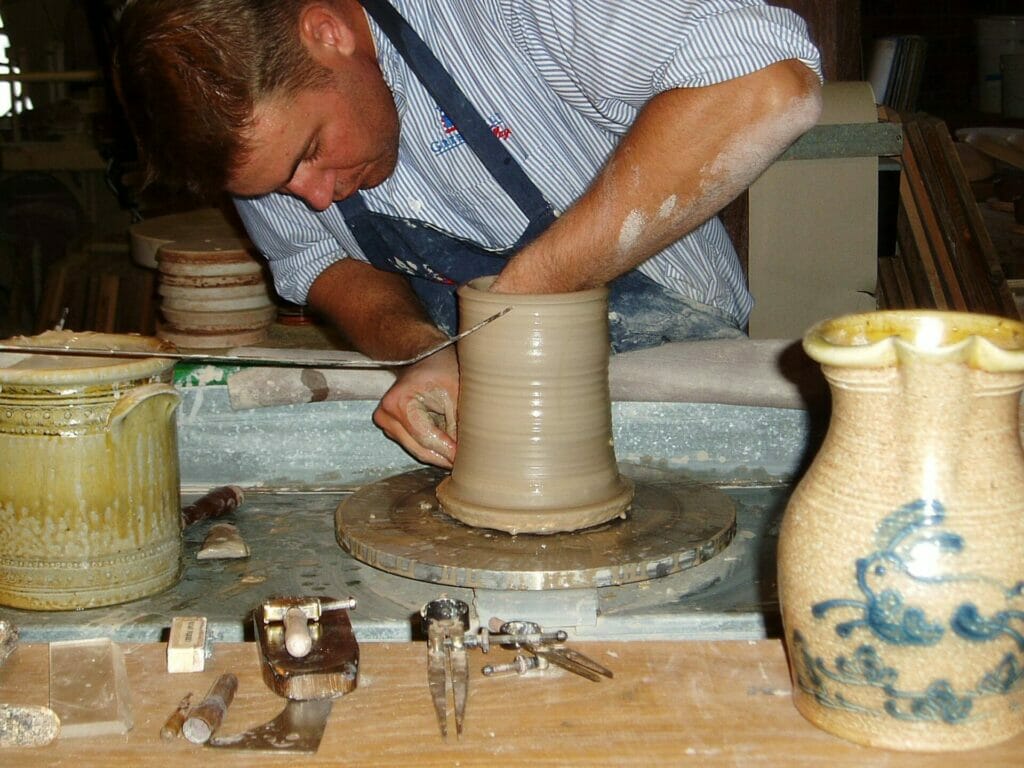
Boosting Self-Awareness through Art Therapy
Boosting Self-Awareness through Art Therapy is an innovative way of promoting emotional and mental healing. Art therapy is a form of creative expression where individuals use art as a medium to represent their thoughts, feelings, and emotions. Boosting self-awareness through art therapy is based on the concept that engaging in creative expression can help individuals gain insight into their thoughts, feelings, and behaviors.
Art therapy works by allowing individuals to explore and express unconscious emotions that may be difficult to articulate with words. Through this process, individuals can identify and confront underlying issues that may be contributing to their addiction. When used as part of a comprehensive addiction recovery program, boosting self-awareness through art therapy can help individuals develop coping skills to overcome triggers and prevent relapse.
Boosting self-awareness through art therapy has been shown to have many benefits for people in addiction recovery. According to research, art therapy can lower anxiety levels and increase overall well-being. Additionally, it has been shown to improve communication skills, which can be helpful in dealing with interpersonal relationships both within and outside of addiction recovery programs.
If you’re struggling with addiction or seeking ways to improve your mental health, consider incorporating boosting self-awareness through art therapy into your treatment plan. You don’t want to miss out on the opportunity to discover new insights about yourself while enhancing your overall well-being in a fun and expressive way.
Feeling down on yourself? Elevating Self-Esteem with Art Therapy might be just what you need.
Elevating Self-Esteem with Art Therapy
Elevating Self-Esteem with Art Therapy is an empowering means of enhancing one’s self-confidence through creative expression. This technique involves the use of various art forms such as painting, drawing, sculpture or other mediums to help individuals gain a better understanding of themselves and their emotions.
Firstly, Art therapy encourages self-exploration in a non-judgmental space which can create a space where people feel safe to be vulnerable without fear of criticism whilst generating positive feelings about themselves.
Secondly, it helps individuals develop new coping strategies to handle negative thoughts or difficulties they may be encountering. The creative process can bring about emotional release and act as a medium for individuals to fully express themselves.
Thirdly, art therapy provides a platform for discovering one’s talents and strengths, helping them build confidence and an increased sense of accomplishment within themselves.
Furthermore, studies indicate that art therapy can lead to significant improvements in mood, reducing anxiety and depression by boosting self-esteem levels – this has the potential to mitigate addictive tendencies caused by low personality esteem.
Case in point: A self-taught artist from New York City who fell into drug abuse in his teenage years began attending art therapy sessions. Within the session rooms under therapeutic engagement he honed his crafts leading him towards recovery from addiction through creativity. He later came up with unique artwork pieces depicting resilience globally adopted by reputable organizations combating drug addiction tendencies presently.
With improved self-esteem levels from Art Therapy prime ready set-up; we dive into Improved Coping Mechanisms with Art Therapy because who doesn’t want better coping skills at their fingertips?
Improved Coping Mechanisms with Art Therapy
Improved Coping Mechanisms with Art Therapy
Art therapy is a form of therapy that uses creative expression to help individuals manage stress, anxiety, and depression. It involves using art as a means to communicate and express emotions that might be difficult to put into words. One of the key benefits of art therapy is improved coping mechanisms.
By enabling individuals to express their thoughts and emotions through artistic expression, art therapy helps them develop more effective coping skills. Creating art can provide a sense of comfort and release from negative feelings, which can in turn reduce the likelihood of turning to unhealthy coping mechanisms such as drugs or alcohol.
The act of creating art also engages different parts of the brain which enables an individual’s mind to focus on something other than their struggles or worries. This kind of distraction has been found to be particularly useful for those trying to overcome addiction. Another form of therapy that has similar benefits is music therapy in addiction recovery.
Studies have shown that participation in art therapy improves self-esteem and self-efficacy – critical components for recovery from addiction. Those who participate in such mental health services are better able to manage symptoms like anxiety or depression due to the underlying illnesses or side-effects precipitated by abuse.
In fact, many people undergoing rehab programs for drug addiction have sought out this method on patient recovery forums independently.
Through the use of creative expression, individuals can learn how to regulate their emotions while sharing information about their life with therapists without talking directly about it leading naturally onto discovering underlying issues- ultimately leading down paths towards tackling problems they may have been avoiding in other parts of treatment.
Art Therapy’s Role in Addiction Recovery? Let me tell you my story…
Art Therapy’s Role in Addiction Recovery
As an addiction recovery counselor, I ve seen firsthand the power that art therapy can have in helping clients heal and grow. In this part of the article, we re going to explore the role of art therapy in addiction recovery. Specifically, we ll be diving into three key areas where art therapy has been found to be particularly effective: regulating emotions, enhancing self-expression, and developing effective problem-solving skills. Each sub-section will provide insights into how art therapy can help someone in addiction recovery, backed up by research studies and real-life examples.
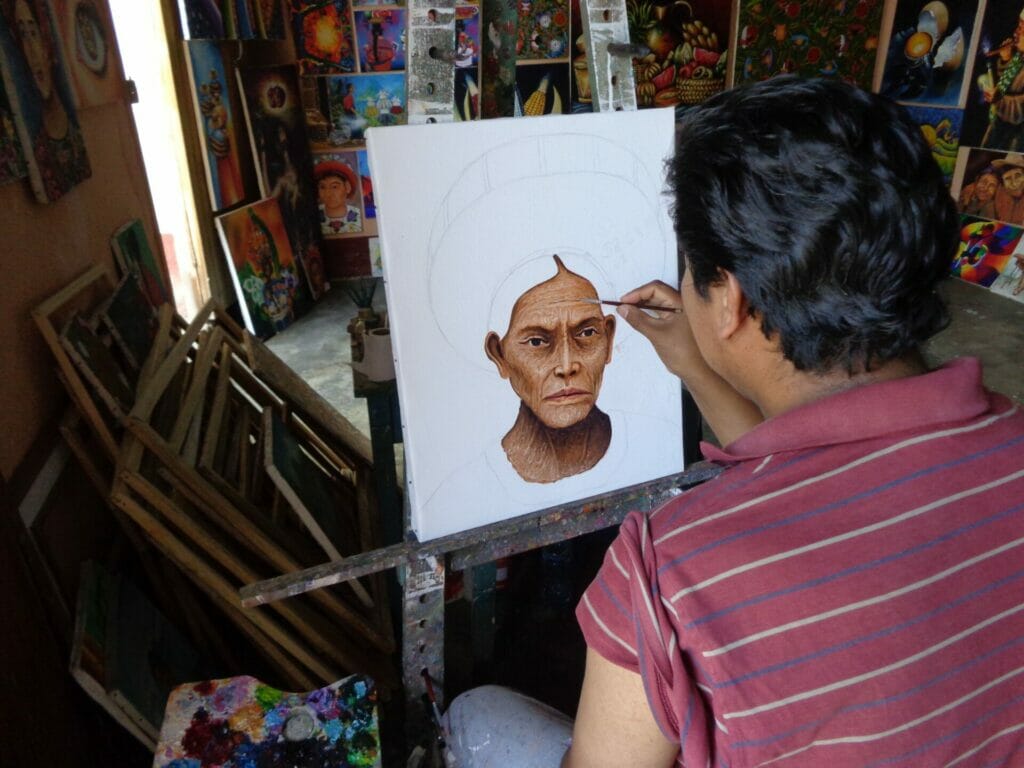
How Art Therapy Regulates Emotions
Art therapy is an effective way to regulate emotions. By focusing on the creative process, art therapy allows individuals to identify and express their emotions in a healthy way. It provides an outlet for emotions that may be difficult to communicate through words.
How does art therapy work to regulate emotions? When creating art, individuals enter a state of flow where they are completely absorbed in the task at hand. This distraction from negative thoughts and feelings can be therapeutic. Additionally, creating art has been shown to increase dopamine levels in the brain, promoting feelings of pleasure and happiness.
Art therapy also allows individuals to gain insight into their emotional states. Through the creation of art, patterns and themes may emerge that reveal underlying emotions or experiences that were previously unclear. This insight can lead to further self-awareness and emotional regulation.
Studies have shown that art therapy is particularly effective in regulating emotion for those with addiction issues. The act of creating art provides a positive activity for individuals as they navigate recovery. Furthermore, it helps them build skills such as problem-solving, coping mechanisms, and stress reduction that can contribute to long-term success.
A true fact related to this topic comes from the American Art Therapy Association which states that 5% of adults suffer from addiction – but nearly 15% of young adults do suffer (meaning ages 18-25).
So why not give art therapy a try? Not only does it offer a unique approach to emotion regulation, but it also has the potential to uncover hidden strengths and promote personal growth. In the next section, we explore how art therapy can enhance self-expression in even greater detail.
Enhancing Self-Expression through Art Therapy
When words fail us, art therapy steps in. It is a form of therapy that involves using artistic techniques to express emotions and feelings that may be difficult to put into words. Enhancing self-expression through art therapy is one of its primary goals. Many individuals find it challenging to articulate their thoughts and feelings, and art therapy allows them to communicate and explore what they’re experiencing through various creative mediums.
Art therapy works by providing a safe and open environment for individuals to express themselves without the fear of judgement. During the process, the therapist will encourage exploration of different mediums such as painting or drawing, based on the individual’s interests and preferences. The clients can channel their inner turmoil onto paper or canvas, which leaves many feeling relieved from anxiety or even depression.
The reason behind enhancing self-expression through art therapy is due to the therapeutic value of creating something personal that comes straight out of an individual’s own expressions without any alteration. Artistic creations reveal aspects of ourselves that we may not have been aware were inside us. These hidden messages provide insight into what we’re feeling and why we might be experiencing certain emotions.
Valuable information about enhancing self-expression through art therapy points out that it’s also an avenue for people who are hesitant or unable to discuss their struggles with others verbally but feel comfortable expressing themselves creatively.
As human beings, our deepest desires are often concealed within us, making it hard to come out spontaneously in real life situations; knowing about ‘Enhancing Self-Expression Through Art Therapy‘ thus helps individuals become more expressive in other spheres of life too. Enrolling oneself in such a program actively decreases the chances of missing out on emotionally fulfilling activities, leading towards living a fulfilled life every day.
Feeling like there’s no easy way to solve life’s problems? Give it a chance! Art Therapy just might be your solution – flexing your creative muscles could help you transform thoughts buried deep inside you into thoughtful pieces which become little rays of sunshine in your life.
Developing Effective Problem Solving Skills with Art Therapy
Developing effective problem solving skills is an essential trait that everyone should have. It helps in making life easier and navigating through the various challenges that come along. However, not everyone is equipped with this skill set, and that’s where art therapy comes into play.
Art therapy has proven to be a very effective tool for helping people develop effective problem solving skills. Through art, individuals are encouraged to express their emotions freely and explore creative solutions to problems they may be facing. This approach allows individuals to tap into their creativity, which is often dormant.
The reason why art therapy works is because it bypasses the rational part of the brain and taps into the emotional part. It encourages individuals to view problems from different angles and think outside the box. Art therapy has been shown to help reduce stress levels, enhance self-awareness, and improve communication skills.
Art therapists focus on helping individuals access their unconscious mind by working with colors, shapes, and lines. This method has helped many people become more intuitive about themselves and thus make better decisions in life.
If you’re struggling with developing effective problem solving skills or if you’re feeling stuck or overwhelmed by a situation in your life, art therapy could be an avenue worth exploring. Don t miss out on the chance to explore new ways of thinking about issues that matter most to you.
Feeling lost in times of troubles? Maybe it’s time we start looking at things a new way – starting with Art Therapy!
Challenges of Implementing Art Therapy in Addiction Recovery
In exploring the benefits of art therapy in addiction recovery, it s essential to acknowledge the challenges that come with implementing this treatment approach. Unfortunately, not everyone has easy access to art supplies, and not every therapist is qualified in this area. This section will cover some of the challenges people might face when trying to participate in art therapy as a part of their addiction recovery. We will discuss topics such as:
- The accessibility and availability of art supplies
- Finding qualified art therapists for recovery
- Managing the cost of art therapy for addiction treatment

Accessibility and Availability of Art Supplies
Accessibility and availability of art supplies are crucial aspects when it comes to implementing art therapy in addiction recovery. It is important to provide access to quality art supplies for patients who are undergoing art therapy as part of their treatment plan.
Accessibility and availability of art supplies in a rehabilitation setting can significantly improve the effectiveness of art therapy. Providing patients with easy access to a range of materials will allow them to explore different creative avenues, allowing them to discover new interests and therapeutic outlets.
The accessibility and availability of specific art supplies may also have a significant impact on the type and quality of artwork that is produced during art therapy sessions. Different mediums may work better for certain patients depending on their individual needs, preferences, and artistic abilities.
For example, some patients may prefer using watercolors or colored pencils rather than traditional paint brushes or oil paints. Additionally, certain individuals may benefit more from sculpting or collage work than from traditional painting techniques.
Whether you’re running an addiction treatment center, providing group counseling sessions, or simply offering support for those struggling with addiction in your community, making sure that patients have access to quality art supplies is a small but incredibly valuable gesture that can make a real difference.
Pro Tip: If you’re looking for affordable ways to get started with providing reliable access to high-quality art supplies in your rehabilitation facility or community outreach program, consider reaching out to local businesses or community groups for donations or financial contributions. In many cases, these organizations will be happy to provide support if they recognize the value of the work you’re doing.
Next up – ‘Finding Qualified Art Therapists for Recovery’: If we’ve learned anything so far about implementing effective art therapy programs in addiction recovery settings, it’s this: having access to high-quality materials is only half the battle. The next major challenge involves finding qualified professionals who can deliver these programs effectively while ensuring that your patients are getting the care they need.
Finding Qualified Art Therapists for Recovery
Art therapy has become a key aspect of addiction recovery for many people. While traditional forms of therapy, such as talk therapy, have their benefits, art therapy provides an added dimension that allows individuals to express themselves through creative means.
One major challenge that arises in implementing art therapy in addiction recovery is finding qualified art therapists. Qualified art therapists are those professionals who have completed a thorough education and training program in the field of art therapy. They possess skills and knowledge related to both traditional therapy techniques and the use of creative arts to facilitate healing. This combination makes them uniquely suited to help individuals recovering from addiction.
Finding qualified art therapists requires careful research and consideration. It’s important to look for therapists who have received accreditation from reputable organizations, such as the Art Therapy Credentials Board. Additionally, good referrals from other healthcare professionals or former patients can be invaluable when searching for a therapist.
While finding qualified art therapists can be challenging, it is well worth the effort. These professionals have unique insights into the role of creativity in healing and can provide vital support for individuals on their paths to recovery.
If you’re struggling with addiction and looking for ways to enhance your recovery journey, don’t overlook the benefits of art therapy with a qualified professional. By investing time and energy into finding the right therapist for you, you may find yourself unlocking new depths of healing and transformation.
As we continue exploring how art therapy can transform addiction recovery journeys, let’s turn our attention now to another important topic – managing the cost of this valuable form of treatment.
Managing the Cost of Art Therapy for Addiction Treatment
Managing the cost of art therapy for addiction treatment is an important aspect to consider when availing treatment options. Art therapy is a lesser-known approach that can be used as an adjunct to traditional forms of treatment such as medication and counseling. It involves using creative mediums like painting, drawing or sculpting to channel one’s emotions and inner thoughts into tangible expressions.
Art therapy for addiction recovery can be managed in several ways. Firstly, it has been found that group sessions are more cost-effective than individual sessions as they allow therapists to work with multiple patients at once. Secondly, some rehabilitation centers offer special packages wherein art therapy is included along with other forms of treatments so as not to increase the overall cost burden on patients.
There are several reasons why managing the cost of art therapy for addiction treatment is crucial. Addiction treatment is often a prolonged process that can last for months or even years, which may not be financially feasible for everyone. Many people may also have limited insurance coverage for mental health services or simply cannot afford out-of-pocket expenses. Therefore, making art therapy accessible and affordable means offering more options for those who need them.
It’s interesting to note that while art therapy was initially developed as a tool for psychotherapy and self-discovery, it has now gained popularity in treating addiction as well. Research has shown that creating art stimulates the reward center in our brain, which helps reduce cravings and alleviate negative emotions associated with withdrawal symptoms.
Pro tip: If you’re looking to explore art therapy but don’t want to commit long-term resources, try signing up for community classes or workshops instead. Many non-profit organizations offer free or low-cost programs aimed at promoting mental wellness through artistic expression.
Five Facts About Benefits of Art Therapy in Addiction Recovery:
- Art therapy can provide individuals in addiction recovery with a safe and healthy way to express their emotions and experiences. (Source: National Institute on Drug Abuse)
- Art therapy can help individuals in addiction recovery develop important coping skills and reduce stress and anxiety. (Source: Substance Abuse and Mental Health Services Administration)
- Art therapy can be used in both individual and group settings in addiction recovery, offering opportunities for social connection and support. (Source: American Art Therapy Association)
- Art therapy has been shown to be effective in improving mood, self-esteem, and overall quality of life for individuals in addiction recovery. (Source: Psychology Today)
- Art therapy can be used as a complementary treatment alongside other forms of addiction therapy to support holistic healing. (Source: Addiction Center)
FAQs about The Benefits Of Art Therapy In Addiction Recovery
What is Art Therapy, and what are the benefits of Art Therapy in Addiction Recovery?
Art Therapy is a form of therapy that involves the use of art to express oneself. It is beneficial in addiction recovery because it helps individuals to process and express their emotions, which can be difficult through traditional talk therapy. Art therapy improves self-awareness and self-esteem, reduces stress, and promotes relaxation.
How does Art Therapy help in Addiction Recovery?
Art Therapy helps in addiction recovery by providing a safe and non-judgmental space to express oneself. It helps individuals to explore their emotions, thoughts, and feelings related to addiction creatively. It enables an individual in recovery to gain a deeper understanding of themselves, making it easier to follow their substance-free journey.
Who can benefit from Art Therapy in Addiction Recovery?
Anyone in addiction recovery can benefit from Art Therapy, including those who have experienced trauma, have difficulty expressing themselves through traditional talk therapy, or have co-occurring disorders. Art Therapy helps to improve self-awareness and fosters the ability to manage and overcome personal challenges.
What is the process of Art Therapy in Addiction Recovery?
The process of Art Therapy in addiction recovery depends on the individual’s needs and goals. The individual will work with a therapist who will guide them through the creative process, encouraging them to express themselves through various forms of art. The therapist works to facilitate self-awareness, acceptance, and provide a deeper understanding of oneself.
Is Art Therapy in Addiction Recovery an Alternative to Traditional Therapy?
No. Art Therapy is not an alternative to traditional therapy; it is a complementary approach to therapy. Incorporating Art Therapy in addiction recovery alongside traditional therapy, such as group or individual therapy, can yield better results. Both forms of therapy work together to provide a holistic approach to healing.
What are the long-term benefits of Art Therapy in Addiction Recovery?
The long-term benefits of Art Therapy in addiction recovery include improved self-esteem, reduced stress and anxiety, and better communication skills. Individuals gain a deeper understanding of themselves and develop the tools to manage and overcome personal challenges. Art Therapy is a therapeutic intervention that enables individuals to gain personal insight, develop healthier coping strategies, and express emotions in a constructive and positive way




